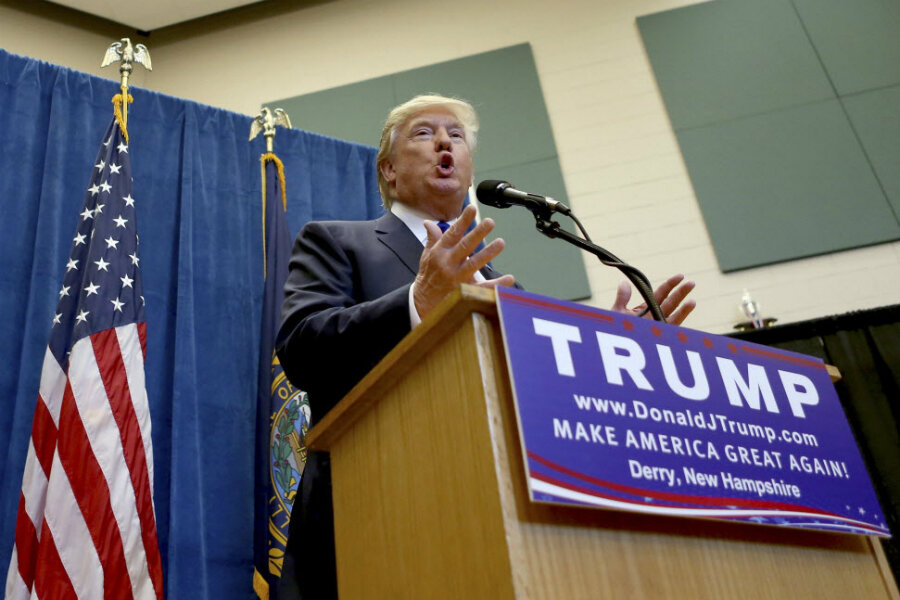Why Donald Trump's 2016 bid looks less and less like 'entertainment'
Loading...
Remember when the Huffington Post said it was moving stories about Donald Trump from its political section to entertainment?
“Our reason is simple: Trump’s campaign is a sideshow,” wrote HuffPo editors when they made the move in mid-July. “We won’t take the bait.”
Some sideshow. We’re not passing retroactive judgment on this move – journalism isn’t some staid club where everybody has to follow structural norms, and HuffPo should do whatever it thinks best. But Trump is looking less and less like “entertainment” every day, and more like a presidential aspirant who, whether you like his policies or not, is going to be around for months. He seems like he’s actually, you know, trying to win.
Just look at this big rally he’s holding on Friday night in Alabama. What’s with that? Why spend time in Mobile instead of those crucial early voting states, Iowa and New Hampshire?
Because Trump is planning ahead for the so-called “SEC Primary” of March 1, that’s why. Alabama, Texas, Georgia, and Arkansas are among the states that will hold primaries that day. Trump’s strategy runs like this: Do really well – luxuriously well – in Iowa and New Hampshire, where’s he’s leading in polls at the moment. He’s got the money and name recognition to survive the winnowing effect of these two states, no matter what.
Then deliver a crushing blow in the South, where Trump’s harsh anti-immigration rhetoric and big-guy swagger should play well.
“Trump views Alabama, and the other Southern states that hold March 1st primaries, as the key to locking down the Republican nomination,” writes Joshua Green at Bloomberg Politics, describing the Trump approach.
Yes, there are big holes in this strategy. Trump might finally say or do something that causes his support to collapse. Pundits have been predicting that for weeks, though, and it has yet to happen.
Trump could underperform in the Iowa caucuses, causing a cascade of decline that produces a March 1 fizzle.
One by one, the laggard candidates could drop out prior to March 1, and their support could move to Jeb Bush or another non-Trump member of the GOP top tier. That’s perhaps the most likely of the ways in which the Trump bubble might burst.
As Philip Bump writes today in WaPo’s The Fix political blog, Trump may be able to sustain his lead in the polls as long as 17 candidates are in the race to split the non-Trump 16 ways.
“But 17 candidates will not be running forever,” Bump writes.
But remember this: Every GOP hopeful has holes in their strategy. To varying degrees, each is depending on fate to one day swing their way.
Is Trump’s approach any less likely than, say, Ted Cruz’s?
And there’s evidence that, inch-by-inch, GOP voters are taking Trump’s rise more seriously, whether they support him or not. Rasmussen has a poll out today that finds 57 percent of likely Republican voters now think Trump is likely to be the Republican nominee.
Two months ago, when he announced his bid, the corresponding figure was 27 percent.






